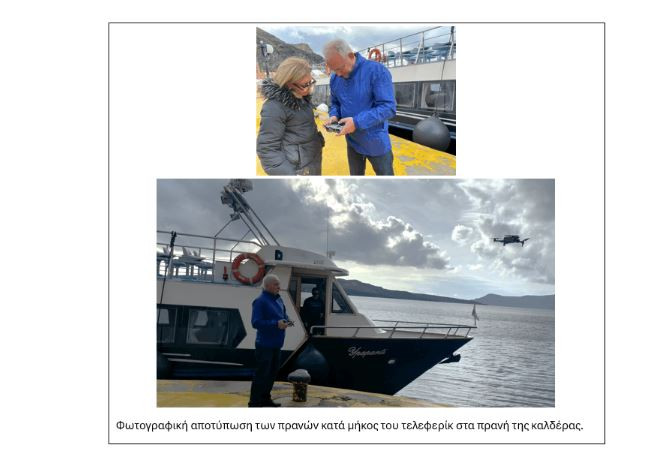Numerous seismic vibrations recorded to date have caused cornerstone destabilization in several areas
The Interdisciplinary Risk and Crisis Management Committee of the National and Kapodistrian University of Athens (EKPA) is conducting a systematic research in the relief of Santorini, with the aim of identifying areas of increased landslides.
According to a statement from the NCA, Professor Efthymios Lekkas and his team are following the evolving seismic sequence and its concomitant phenomena on the island of Santorini. In the past few days, along with Professors Niki Evelpidou and Asimina Antonarakou, he conducted on -the -spot surveys in the countryside, evaluating the landslide and calibering the prediction models, while other missions are followed by the monitoring and detailed recording of the phenomenon.
The numerous seismic vibrations that have been recorded to date have caused destabilization of slopes in several areas. This risk is attributed to the intense morphological slopes, the composition of rocks, as well as to the alternations of materials with different corrosion resistance. In addition, human activities further burden the already vulnerable areas.
Particular concern is the areas with differential erosion, where the less durable rocks are disintegrated, leaving the most durable layers exposed, which then collapse. A typical example is volcanic lava, which often lose their support from the underlying rock, leading to collapse.
The research team has already identified specific areas of increased risk and has made on -the -spot visits to record and imprint them.
It is important to emphasize that the destabilization of slopes can lead to landslides even after the cessation of the seismic activity. A heavy rainfall can act as a catalyst, accelerating failure processes.
Source: Skai
I have worked as a journalist for over 10 years, and my work has been featured on many different news websites. I am also an author, and my work has been published in several books. I specialize in opinion writing, and I often write about current events and controversial topics. I am a very well-rounded writer, and I have a lot of experience in different areas of journalism. I am a very hard worker, and I am always willing to put in the extra effort to get the job done.











